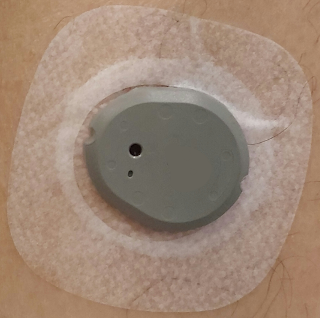Quick Recap
Glucose monitoring for clinical evaluation has come a long way since measuring one's 'fasting glucose'. This value provided a snapshot of your resting glucose levels early in the morning after allowing for overnight resumption to baseline levels.
One also had the Oral Glucose Tolerance Test (OGTT), though this was a more detailed procedure - ~ 2hrs and many pokes in between to sample your blood. A graph plot of glucose levels in this time period showed how the body was responding to a controlled glucose challenge.
These two tests were good for diagnosis and getting a picture of glucose homeostasis in an individual. Based on this healthcare professionals (HCPs) could decide on course of action to manage cases of glucose intolerance a.k.a diabetes (or even prediabetes).
Enter HbA1C test OR more simply A1C test. This test changed the paradigm of evaluation and management of diabetes in clinical settings. It provided a snapshot average of glucose levels in the body over three months. Useful for long-term glucose management.
So why was this cool? No more asking a patient to arrive fasting at the lab. Also the levels gave a clear window into how the glucose homeostasis was over the three months. This could assist HCPs in providing more actionable suggestions in terms of managing lifestyle choices in patients e.g. specific foods, physical activities etc.
The principle behind the test was elegant and simple. Hemoglobin in the RBC cells in blood reacted with glucose at a constant rate to form a product that could be easily measured. Since this simple chemical reaction occurred in the body at a constant rate one could calibrate the glucose levels easily. Why 3 months? Remember RBCs in our body have a lifespan of about 120 days. So a test after another 120 days was enough to monitor the progress.
Well! What if the lifespan of RBCs aren't ever the same? What if the RBCs of certain demographics are inherently different to reacting with glucose? What about cases of hemoglobinopathies?
The answer is yes to all of the above. So, though Hemoglobin A1c (HbA1c) has come to be regarded as the gold standard for assessing glycemic control in individuals with diabetes, it is not without its limitations. Regardless of the caveats the test continues to be useful and a mainstream approach to evaluation of glucose homeostasis in an individual.
The Problem with Traditional A1C
One significant caveat is the demographic differences observed in HbA1c levels. For instance, research indicates that South Asians tend to have HbA1c levels that are approximately 0.5–0.7% higher than other populations for the same glucose exposure [1]. This discrepancy can lead to misinterpretations of glycemic control and potentially inappropriate clinical decisions.
Moreover, biological confounders such as variations in red cell turnover and the presence of hemoglobinopathies can affect HbA1c readings [2]. Conditions like anemia or sickle cell disease can alter the lifespan of erythrocytes, thereby impacting the accuracy of HbA1c measurements. These factors underscore the need for more reliable and individualized methods of monitoring glucose levels.
Given these limitations, the introduction of Continuous Glucose Monitoring (CGM) systems offers a promising alternative. CGM provides real-time data on glucose levels, capturing fluctuations that HbA1c might miss [3]. This leads us to the next section, where we explore the strengths of CGM data and its potential to revolutionize diabetes management.
Table: Comparison of HbA1c and CGM Metrics
| Metric | HbA1c | CGM |
|---|---|---|
| Data Points | Average over 2-3 months | ~25,920 data points in 90 days |
| Influencing Factors | Red cell turnover, hemoglobinopathies | Real-time glucose fluctuations |
| Demographic Differences | Higher A1C in South Asians | Individualized data |
2. The Strength of CGM Data: Power of Numbers
Continuous Glucose Monitoring (CGM) systems have transformed diabetes management by providing a wealth of data that far surpasses traditional methods. Over a 90-day period, CGM devices can generate approximately 25,920 data points, offering a detailed and dynamic picture of glucose levels [4]. This abundance of data significantly reduces random error, averaging out the Mean Absolute Relative Difference (MARD) to around 8.3%.
The power of CGM lies in its ability to capture real-time glucose fluctuations, which HbA1c measurements might miss. Unlike HbA1c, which reflects an average over several months, CGM provides immediate insights into daily glucose patterns [5]. This real-time data is invaluable for making timely therapeutic adjustments and for understanding the impact of lifestyle changes on glucose levels.
Moreover, the CGM-derived Glucose Management Indicator (GMI) correlates well with HbA1c but avoids the biases linked to erythrocyte lifespan [6]. This makes GMI a more reliable indicator for individuals with conditions that affect red cell turnover or hemoglobinopathies. By providing a more accurate reflection of glucose control, CGM can help tailor treatment plans more effectively.
As we delve deeper into the capabilities of CGM, it's important to consider the limitations of simply accumulating more data. In the next section, we will explore why extending the monitoring period to six months may not necessarily yield better clinical outcomes and how shorter data windows can be more actionable.
Table: Strengths of CGM vs. HbA1c
| Feature | HbA1c | CGM |
|---|---|---|
| Data Frequency | Every 2-3 months | Continuous |
| Error Reduction | Subject to random error | Reduces random error (8.3% MARD) |
| Correlation | Reflects average glucose | GMI correlates well with A1C |
3. The Limits of "More Data"—Why 6 Months May Not Be Better
While the extensive data provided by Continuous Glucose Monitoring (CGM) systems is invaluable, there are diminishing returns when extending the monitoring period beyond 90 days. Although a longer duration might seem beneficial for capturing comprehensive glucose trends, it can actually obscure meaningful outliers and reduce the clinical relevance of the data [7].
One key issue with extending CGM data to 180 days is the potential for older data to dilute the impact of more recent glucose fluctuations. Therapeutic adjustments, such as insulin titration, require timely and accurate data to be effective [8]. Relying on older data can lead to less responsive and potentially suboptimal treatment decisions. For instance, a patient's glucose levels might have stabilized or worsened in the recent past, but this change could be masked by the inclusion of older data.
Behavioral coaching also benefits from shorter data windows. Immediate feedback loops are crucial for encouraging patients to make lifestyle changes and adhere to treatment plans [9]. Shorter monitoring periods, such as 14-30 days, provide actionable insights that can motivate patients and help healthcare providers make more precise adjustments.
However, longer-term trends are not without their value. They are useful for risk stratification and understanding the overall trajectory of a patient's glucose control [10]. Yet, the key is to balance the need for long-term data with the necessity for timely interventions. This leads us to the next section, where we will discuss the optimal data windows for different clinical use cases and how to tailor CGM data interpretation to maximize its utility.
Table: Impact of Data Window Length
| Data Window | Benefits | Drawbacks |
|---|---|---|
| 14-30 days | Immediate feedback, acute adjustments | Limited long-term trends |
| 90 days | Aligns with A1C, comprehensive monitoring | May miss recent changes |
| 180+ days | Long-term trends, risk stratification | Obscures recent data, less responsive |
4. Optimal Data Windows for Different Use Cases
Determining the optimal data window for Continuous Glucose Monitoring (CGM) is crucial for maximizing its clinical utility. Different use cases require different monitoring periods to ensure the data is actionable and relevant.
14-30 days: This shorter window is ideal for acute treatment adjustments, such as basal insulin titration. It provides immediate insights into the patient's current glucose levels, allowing for timely and precise therapeutic changes. Short-term data is also beneficial for behavioral coaching, as it offers quick feedback that can motivate patients and help healthcare providers make more precise adjustments.
90 days: Aligning with the traditional HbA1c measurement period, a 90-day window is best for clinical monitoring. It balances the need for comprehensive data with the necessity for timely interventions. This period smooths out random errors and provides a reliable average of glucose levels, making it suitable for routine check-ups and ongoing management of diabetes.
180+ days: Longer-term data windows are useful for observing trends and risk stratification. They help healthcare providers understand the overall trajectory of a patient's glucose control and identify patterns that might indicate future complications. However, while valuable for long-term planning, these extended periods are less effective for immediate therapeutic adjustments and can dull responsiveness to current conditions.
This approach ensures that the data is both relevant and actionable, enhancing the effectiveness of lifestyle adaptions while managing diabetes.
5. Concluding Thoughts
The journey through understanding temporal granularity in glucose monitoring highlights the importance of selecting the optimal data window for clinical actionability. Continuous Glucose Monitoring (CGM) systems offer a powerful alternative to traditional HbA1c measurements, providing real-time data that can significantly enhance diabetes management. However, the key to maximizing the utility of CGM lies in tailoring the data window to the specific clinical needs.
Take Home Messages:
- Recognize the Limitations of HbA1c: While HbA1c is a valuable tool, it has significant limitations due to demographic differences and biological confounders. CGM offers a more individualized and accurate reflection of glucose control.
- Leverage the Strength of CGM Data: The extensive data provided by CGM systems reduces random error and offers immediate insights into glucose fluctuations, making it a superior tool for real-time diabetes management.
- Balance Data Windows for Clinical Relevance: Shorter data windows (14-30 days) are ideal for acute treatment adjustments and behavioral coaching, while 90-day periods align well with traditional monitoring practices. Longer-term data (180+ days) is useful for risk stratification but less effective for immediate interventions.







